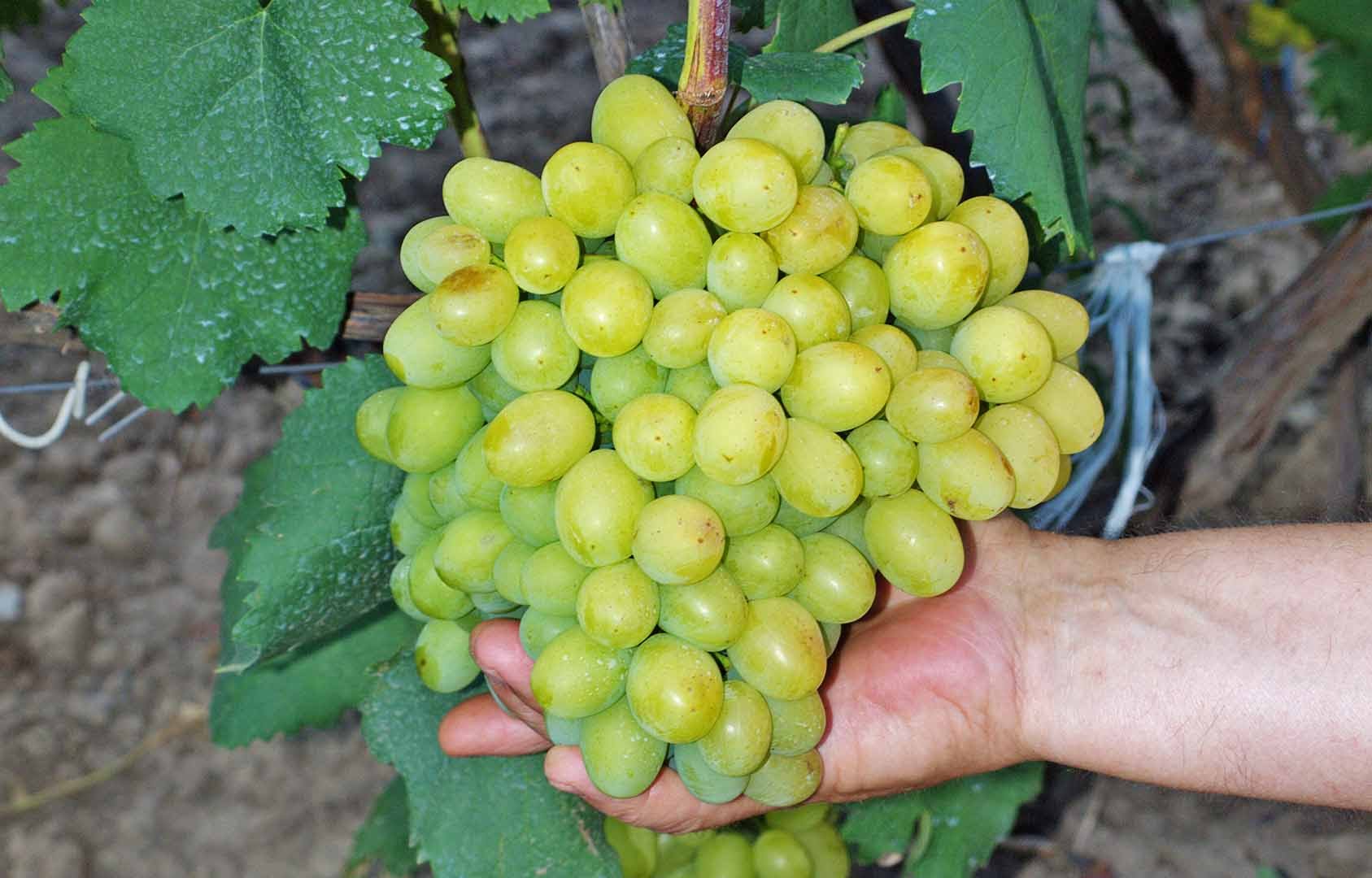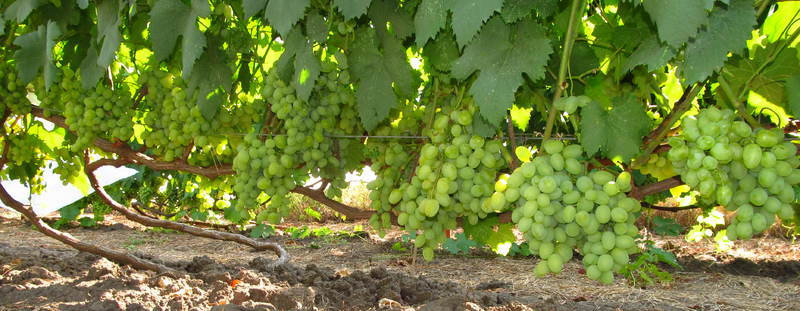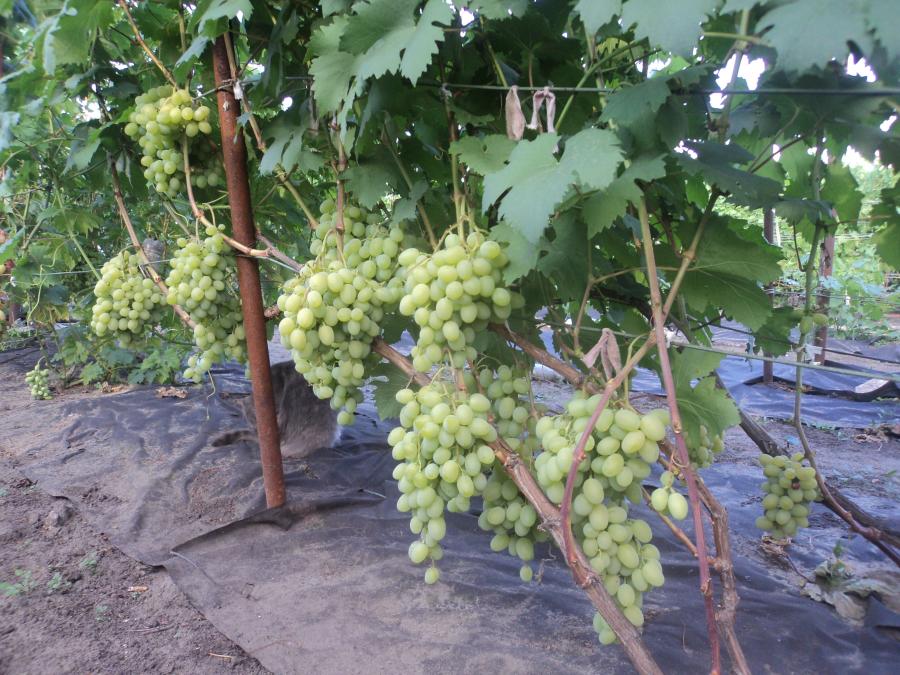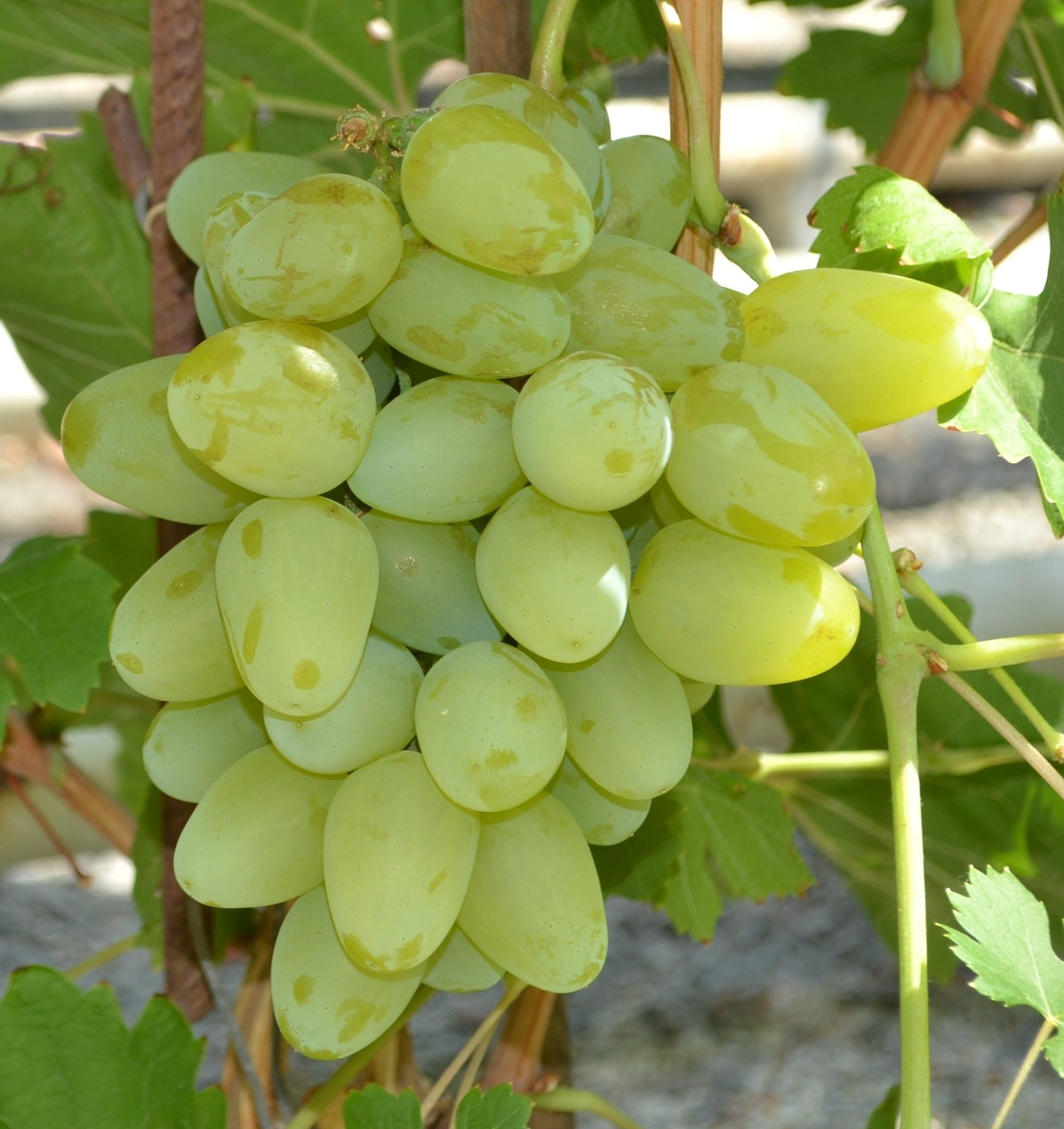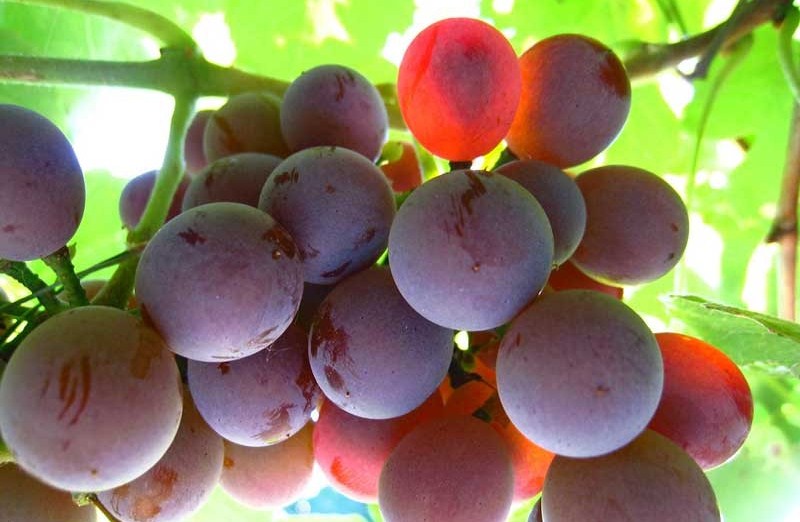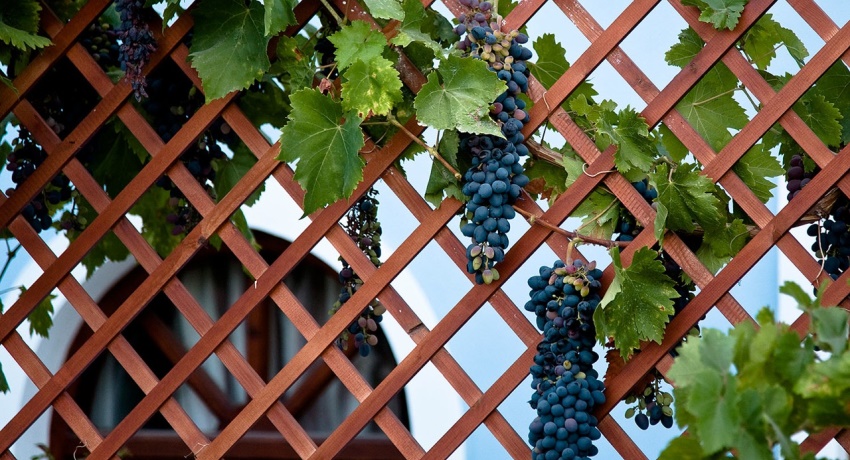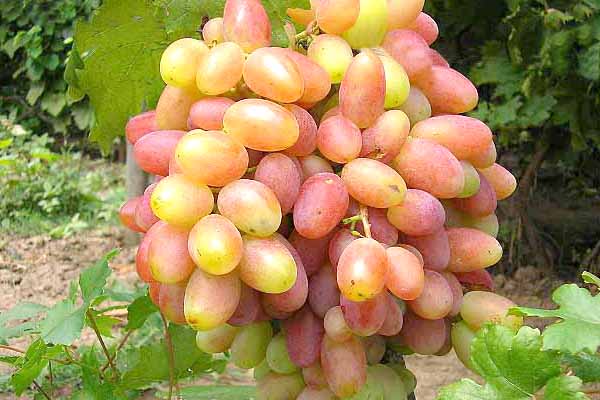Content:
The Galahad grape is an early ripening member of the family, which has gained popularity among Russian gardeners due to its taste and fruitful qualities.
History
Galahad (vinograd Galahad) was obtained by agrobiologists from the institute founded by the Svetograd scientist Ya.I. Potapenko by crossing several types of grapes:
- Delight with nutmeg flavor;
- classic Rapture;
- Mascot.
The hybrid plant adapts well in the regions of the southern and central regions of the Russian Federation.
Characteristic
Trunk
The bunches are arranged in a cone. Shoots reach a height of 200 cm.
Flowers are capable of self-pollination. The leaves are of both medium and large size, three-finger shape (similar to black currant leaves).
Fetus
The harvest has a mild sweet taste and is considered early maturing. One bunch under optimal conditions can yield from 0.5 kg to 1.3 kg of the crop.
The color of the berries ranges from milky white to light green. The difference in color is due to the place where the fruit ripens:
- on the sunny side - green;
- in the shade - milky.
The shape of the berries is similar to an egg with a height of 3 cm and a width of 2 cm: in the case of high-quality feeding, they increase to 3.5 in height and 2.5 in width. Fruit weight varies from 12 to 15 grams. The pulp is of medium density, the skin is thin, however, despite these characteristics, the risk of crackling grapes during transportation is very small.
Among tasters, this variety has 9 points on the sweetness scale.
Use
Due to the sweet taste, you can use:
- for conservation (boiling, jams);
- fresh;
- for the production of homemade wine.
Harvesting
Compared to its predecessors, this variety bears fruit already 3-4 months after the first flowering, which occurs in the first year after planting (“parents” need 2-3 years to provide a good harvest).
Fruits from the Galahad grape variety are harvested in the second decade of July, which is considered by many wine growers to be an early date in comparison with other varieties.
The described variety ripens quickly exclusively in warm and temperate climates, and for the northern regions, fruiting is delayed by two weeks.
Landing
Galahad grapes can be propagated:
- cuttings;
- saplings.
Site preparation
During preparation, you need to do the following:
- select healthy shoots - they should be light brown in color, elastic to the touch and suitable for reproduction in appearance;
- choose a place for planting - the plant should be constantly on the sunny side and protected from the wind;
- properly prepare the soil - if water is near, it is necessary to pour gravel or gravel on the planting site of the seedling, to compact the turf and reduce the risk of decay of the root system;
- it is advisable to choose the soil with the presence of peat or clay;
- prepare pits for seedlings - the distance between the recesses should be at least 200 cm, and between rows up to 300 cm:
- put high-quality soil in the pits together with humus: the depth should be 50 cm, where the first half is set aside for gravel and gravel, and the second for humus, compost, a shovel of ash and fertilizer in the amount of 200 g.
Plant preparation
Before boarding, you must:
- soak in water per day;
- process the roots with clay and let them dry.
Disembarkation
During the pick you need:
- slightly tilt the seedling and plant it in place - a mound up to 200 mm high from ground level;
- gently spread the roots;
- cover with earth above the root processes - up to the neck;
- insulate the soil with ash or sawdust;
- install a peg next to each plant for further garters;
- water abundantly.
Care
To harvest the best harvest, it is desirable:
- thinning - in order to increase the space for fruits;
- pinching - to relieve the load on the branches;
- manual bush formation;
- reducing the acidity of the soil to an optimal state with the help of lime material;
- periodic watering in order to avoid a decrease in soil moisture;
- introduce top dressing from compost and other mineral complexes;
- cut off excess stems twice: in spring and autumn
- to clear the soil under the bushes from fallen leaves and fruits, reducing the risk of root rot.
Winter cleaning
For Galahad to winter well, it is necessary:
- it is necessary to start covering the plant in October before the first cold weather due to the fact that young branches and roots can easily freeze in the first frost;
- to loosen the places where plants grow; sprinkle ash on the ridge - from rodents;
- cut to form a bush;
- cover with straw: the layer is placed under the vine and on it ‒ - the total height of the shelter is about 30 cm;
- cover with isospan or roofing felt - preferably cover the layer from left to right, excluding snow getting under the cover;
- fix it to the ground with bricks or stones.
Disease prevention
To reduce the risk of disease, you must:
- eliminate previously infected plants;
- spray with copper sulfate and a mixture of it and lime milk before the first vine appears (after hibernation);
- re-irrigate before flowering;
- before fruiting, spray the bushes with cumulus or calloidal sulfur - reduces the risk of dew.
- Young animals must be protected from direct sunlight to avoid burning and drying out.
- Water the plant abundantly before introducing complementary foods.
- When preparing the seedlings for planting, it is necessary to cut off all black spots and ends of the roots.
- Select and prepare only annual plants for planting.
- The soil for planting should not have an excessive amount of mineral salts.
- Before planting, it is advisable to cut the seedling to 4 eyes.
- To create a mini-greenhouse, you should cover the plant with plastic containers - it can be a cut-off bottle of 1.5 or 5 liters and keep it in such a "room" for about 2 weeks.
- For the prevention of diseases, the process of spraying the plant must be repeated at intervals of once a year.
- It is recommended to fertilize the grape bush with any manure (cow, horse, lamb, sheep) except pork.
- If it is not possible to prepare the holes for the plant in a month, this must be done in 14 days so that the fertilizers saturate the soil.
- Do not cover with soil for the winter, due to the high risk of plant disease.
- It is undesirable to cover the bushes with a polyethylene film due to the accumulation of water and an increased risk of rotting and freezing of the roots.
Useful Tips
- Old seedlings are dark brown in color, which is very different from annuals.
- It is advisable to make the vineyard closer to the picket fence or the house, so that it receives heat not only during the day, but also at night.
- A healthy seedling of the described variety reaches 25 cm in length.
- In the case of planting several branches, experts advise pulling the rope along the plants for the convenience of tying them.
- Too acidic soil is signaled: plantain, woodlice, and the lack of acid can be recognized by the presence of chamomiles, sow thistle.
- An excess of acid in the soil leads to degradation of plant roots and their death.
- To increase the acidity of the soil, if necessary, you can add gypsum flour.
- It is necessary to water the plant with 30 liters of water in one go. In case of watering with buckets, after each emptied container, make sure that the water has gone into the ground.
- Watering should be done once a week, but the frequency may also depend on weather conditions.
To scare birds away from the plant, you can use:
- scarecrow;
- computer disks;
- mesh fabric;
- mesh bags - tie each bunch in a separate bag;
- bags of herbs with a repellent smell.
Pros and cons
Among the positive qualities it is worth noting:
- strong immunity;
- early maturity;
- high fruiting;
- frost resistance - easily tolerate a drop in temperature to 25 degrees Celsius;
- quality reproduction;
- high adaptability;
- mobility;
- natural protection against pests - not edible for wasps due to its bright specific smell;
- resistance to downy mildew and to the classic species - powdery mildew, this pest;
- stored for a long time - up to a month;
- cuttings with a lack of deciduous cover are as well adapted as their "brothers";
- resistance to any weather conditions.
Among the negative features it is worth pointing out;
- delayed fruiting in cold climates;
- does not tolerate heat, especially at a young age;
- picky about the place of growth;
- predisposition to eating by caterpillars in the absence of measures to combat the pest;
- changes the shade of the fruit with different degrees of illumination;
- lack of predisposition to viticulture in industrial volumes due to the high threshold of frost resistance.
- loved by feathered representatives of the fauna.
We can say that the described representative is worthy of attention not only due to its taste, but also due to its relative unpretentiousness.
